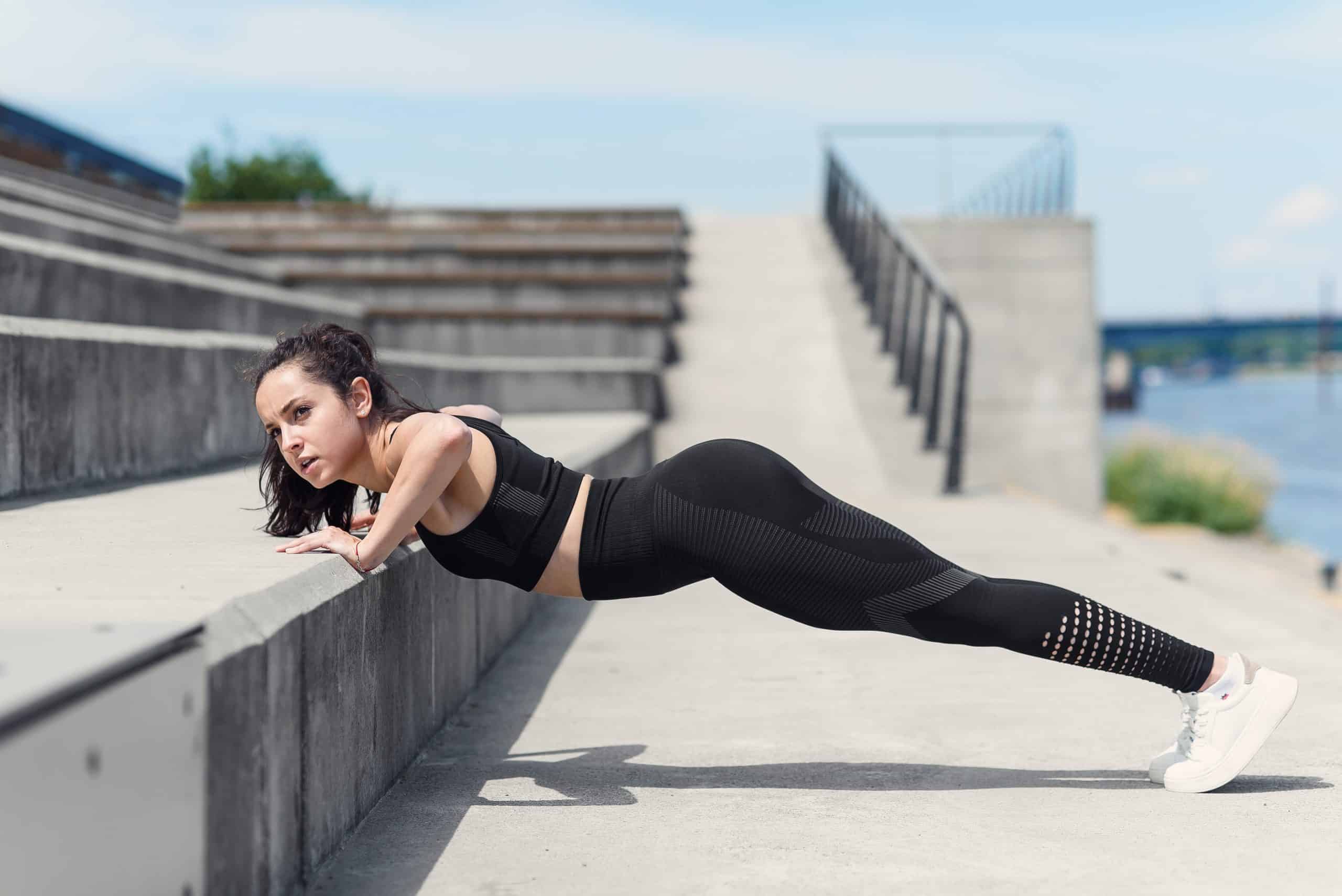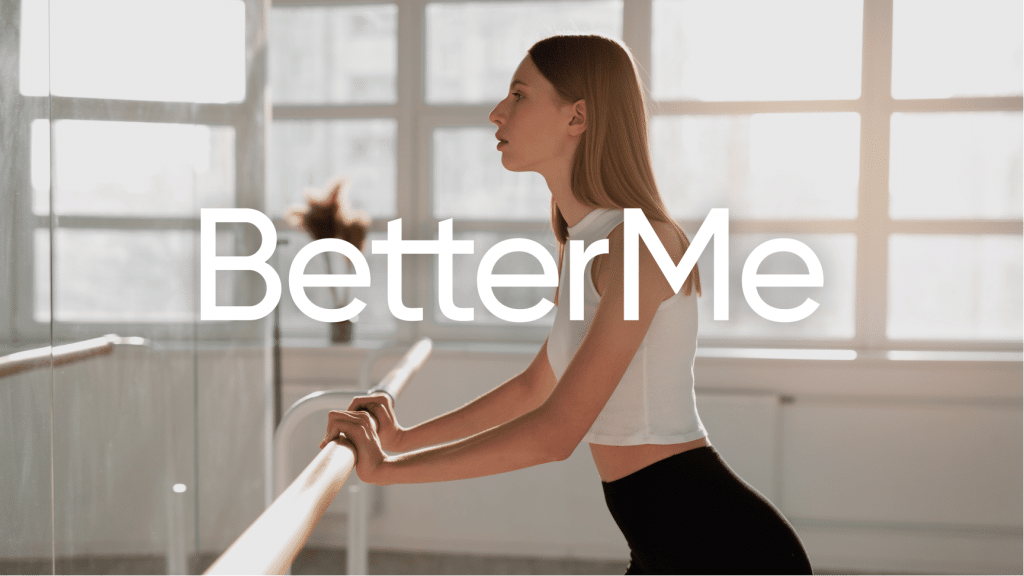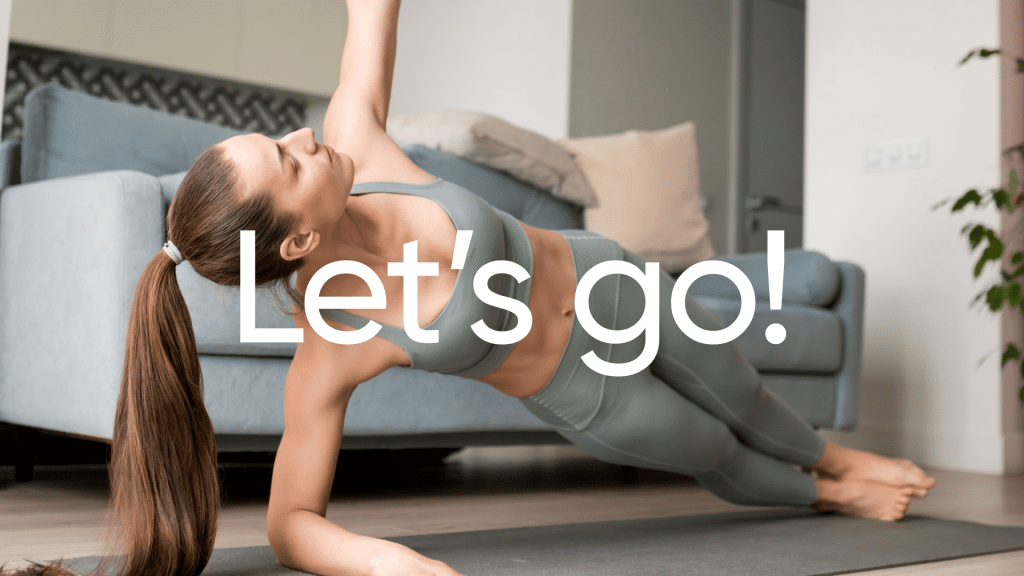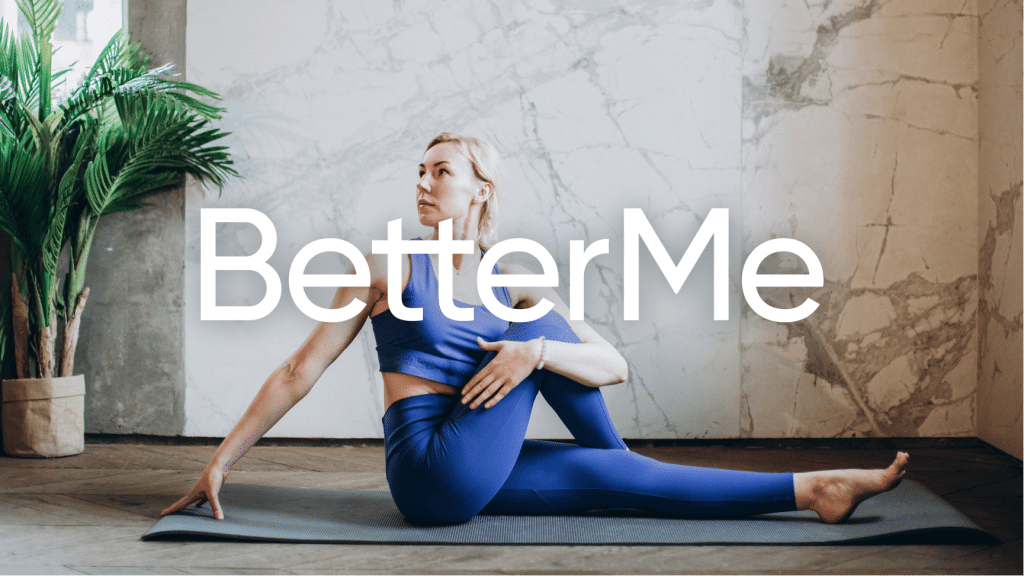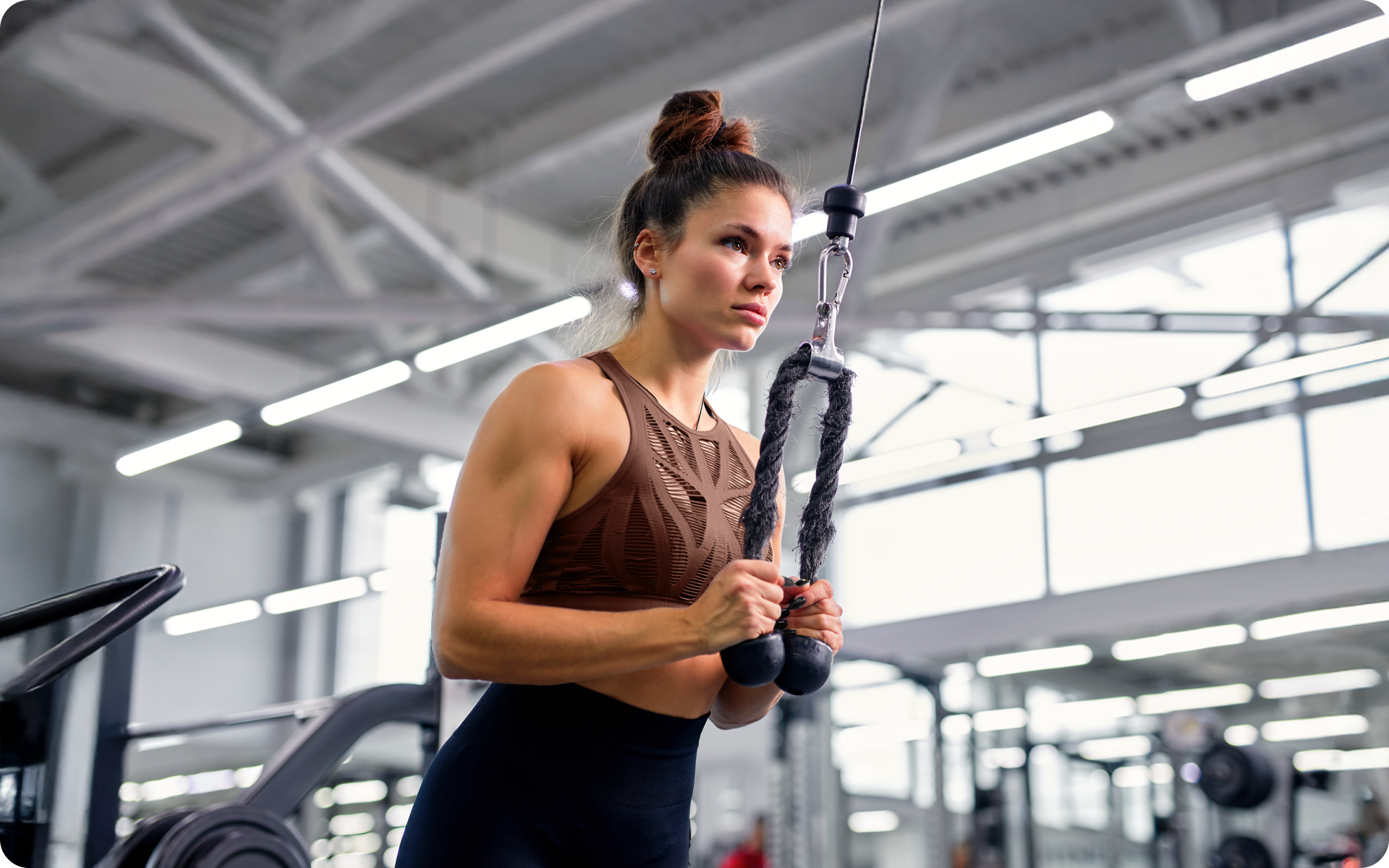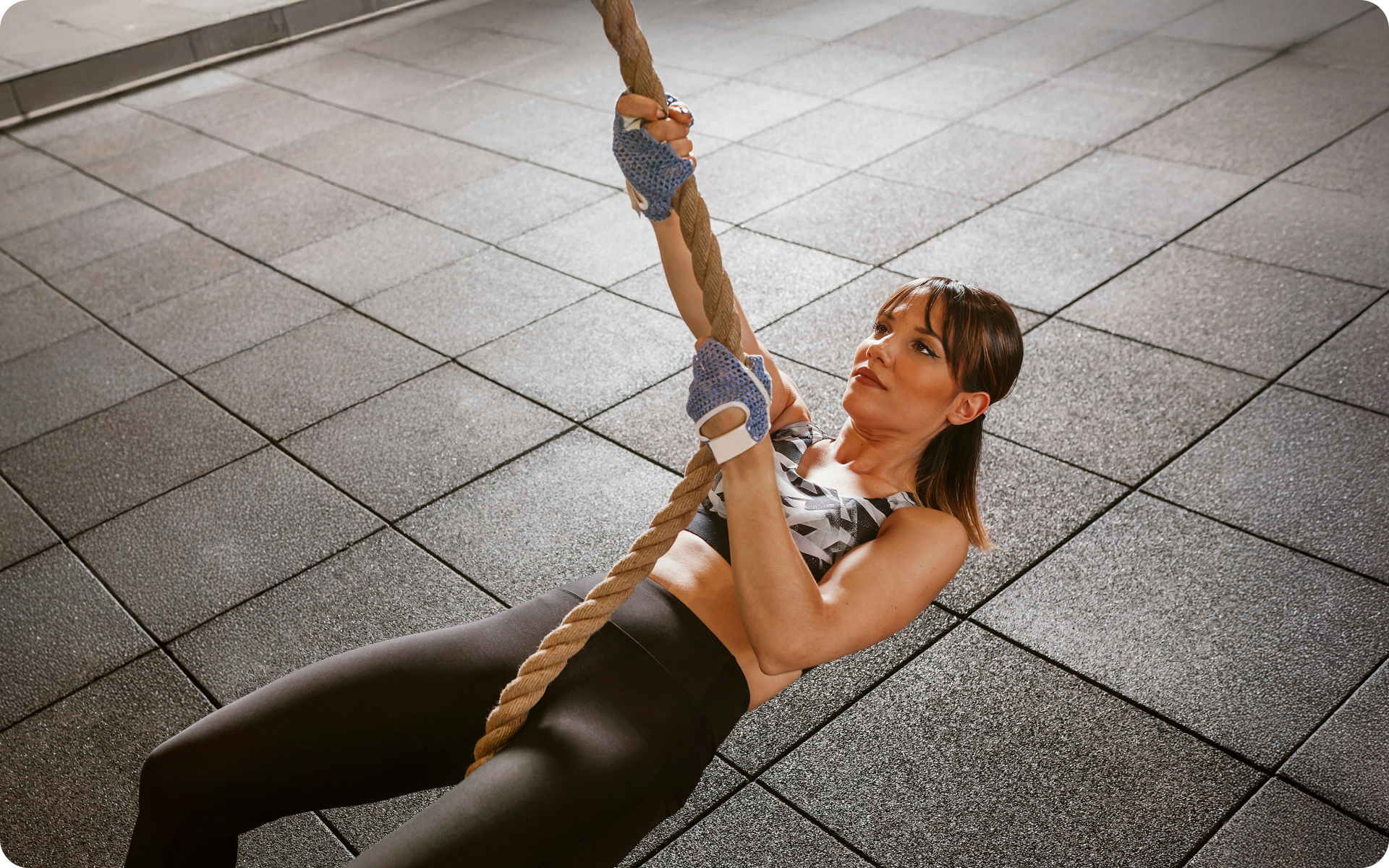As we continue to learn more and more about the benefits of working out, more gyms have started seeing an increase in how many women consistently show up, not only to get on the treadmill, but also on the weight racks. As a woman in the gym, you are very likely to see other women just like you doing cardio exercises or -what is now becoming everyone’s favorite – a very intense leg day routine. Unfortunately, aside from cardio and lower body exercises, many women rarely put the same effort in working out their upper bodies. This not only causes many women to have very limited upper body strength, but they also miss out on the multiple benefits of working out this area of the body. If you have been trying to build more upper body strength (and finally be able to do those pull ups) or simply want to have well toned arms and nicely rounded shoulders, then you should consider adding a push day workout routine to your weekly at-home or gym workouts. Keep reading to find out what is a push-day, how to build the best push day workout routine, which exercises work best for a push day workout routine at home and much more.
What Is A Push Day Workout Routine?
If you have been in the fitness community for a while, or you are a beginner who likes to do their homework first, then you’ve most likely heard about push-pull exercises. These are exercises that train your upper body based on your natural muscle movement patterns.
When using the push-pull training style, you train pushing muscles on one day, then pulling upper body muscles the next. Proponents of such workout routines believe that when you train your upper body muscles like this, you allow your muscles to have ample rest time which lets them rest and recover, which prevents overtraining (2).
So what is a push day workout routine?
A push day workout routine for mass (or strength) is a training regimen that exercises the upper body muscles that are often used in pushing movements. These are located in the chest (pectorals), shoulders (deltoids), and triceps.
Ps. Muscles located in your biceps, back, and forearms are used in pulling movements so exercises targeting them will not be included in the push day workout routine.
What Are The Benefits Of A Push Day Workout Routine?
Some reasons why you should really consider doing more push exercises include
- Prevents overtraining – Overtraining is a condition that occurs when athletes, bodybuilder, or casual gym goers train too much without giving their bodies and muscles ample time to rest and recover.
This condition is signified by symptoms such as extreme fatigue, reduced performance, mood changes, sleep disturbances, and other mental issues like anxiety and depression (3). When you choose to train your body using the push-pull training regimen, you train opposite muscles on different days which allows them to rest and recover, reducing your risk of overtraining.
- Improves functional fitness – Functional fitness consists of exercises that help the body with daily real-life movements and activities. These exercises help your muscles work well together through the simulation of common movements you do or use in everyday life.
As previously stated, push day exercises target muscles that we use in the act of pushing, which can be found in real life pushing doors, trolleys through the grocery store, a charger into a socket, brakes on a car, pushing children on a swing, etc.
- Burns more calories – When you break up your routine into a push and pull routine, you exercise more days of the week, which allows you to burn more calories a day which eventually means faster weight loss.
- Massive gains – If your goal for doing upper body workouts is incredibly toned arms then you are on the right track.
According to a study published in the Journal of Strength of Conditioning Research in 2021, researchers found that doing split routines (like the push-pull) led to more muscle gains than simple full body resistance training (1).
Read More: 7 Simple Tips For Maximizing Results With A 6-Week Workout Plan At Home
What Is The Best Push Day Workout Routine?
If you are looking to make the best routine for yourself (or have seen a premade routine online but aren’t sure if it’s the best for you), here are somethings to consider to determine which push routine will work for you
- Your current fitness levels – If you are new to working out or splitting your routine, you should note that not all routines you will come across online are beginner friendly. Most of the routines posted online tend to be for more intermediate or advanced people – and if you use them, you will very likely hurt yourself.
Always make sure to find a routine that explicitly states ‘beginner friendly’. If you are making a routine for yourself, choose the workouts that you are more familiar with and start with them – or even workouts that are easier for you to do – then work yourself up to the more complicated exercises.
- Rest Days – The purpose of splitting your routine is to give your muscles ample time to rest, recover and grow without overtraining them. Always give yourself at least 2 rest days per week.
If you are unsure how to add a push day workout routine to your current routine, here’s an example of what to do. This is a routine for someone who workout 5 days a week.
- Monday – Upper body pull exercises
- Tuesday – Upper body push exercises
- Wednesday – Full body cardio
- Thursday – Lower body & glutes
- Friday – Core and balance
- Saturdays & Sundays – Rest Days
Another option could be
- Mondays – Upper body push exercises
- Tuesday – Lower body & Glutes
- Wednesday – Upper body pull exercises
- Thursday – Full body HIIT & core
- Fri, Sat, & Sun – Rest Days
- Pacing – There is always the temptation to go all in when you start working out or start a new routine. This is usually part due to excitement and the desire to see results as quickly as possible.
While there is no problem with being excited to try something new, always remember that if you push too hard, you are very likely to burn out sooner or hurt yourself. Be sure to always start slow, build your strength and endurance first before adding more weights or reps to your routine.
- Your goals – What are you training for? Is it for strength or for mass? If your goal is increased mass (aka bigger muscles) then your routine should have more reps and sets – you should also use lighter or moderately heavy weights. If you want to be stronger, focus on lifting heavier weights, lowering the number of reps you do, as well as executing fewer sets.
Please not for more mass reduce the amount of rest time in between your sets and for more strength, your rest times should be longer.
At the end of the day, the best push day workout routine is one that personally works best for you and your goals.
What Is A Good Push Day Workout Routine Women?
First things first, we must understand that exercises are not gendered. In a push day workout routine women and men will be doing the same type of exercises. The only difference in the exercises done could be in the amount of weights used or sets and reps counted, depending on how advanced a person is at the gym.
Here are some exercises that you should add to your push day workout routine
Push Ups
They already have ‘push’ in the name which automatically makes them perfect for this split training routine.
Pushups are a compound workout that target the triceps, pectoral muscles, and shoulders. If using the proper form to do them, they also target your core which is fantastic for anyone looking to have a six pack sometime in the future.
If you cannot do the standard push up – one that starts in a high plank position – try beginner variations such as
- Wall push ups – Stand arms length from the wall with your feet shoulder width apart. Place your arms on the wall, inhale, bend your elbows and slowly lean your upper body into the wall. Keep your feet flat on the ground, hold this position for 2 seconds before exhaling and pushing yourself off the wall.
- Seated push ups – While seated on a bench with your arms by your side, palme down and feet shoulder-width apart, push your palms into the bench and lift yourself about an inch or two off the bench. Hold for 2 seconds before going back to the starting position.
- Knee push ups – Instead of getting into a standard plank position on the ground where you balance on your toes, balance on your knees
Incline pushups are also a variation, but it is not very beginner friendly as it is quite challenging.
If you wish to cinch your waist, tone up your bat wings, blast away the muffin top – our fitness app was created to cater to all your needs! BetterMe won’t give excess weight a chance!
Shoulder Press
Commonly referred to as the overhead press, this can be done using either a barbell, dumbbells or kettlebells. You can also choose to do this exercise while seated or standing.
- Hold a dumbbell in each hand, keep your feet about shoulder width apart and lift the dumbbells to your shoulder
- Keeping the elbows tucked in, palms facing each other, core engaged and back flat, push the weights up till your arms are straight and the the weights are above your head
- Hold here for 2 seconds before slowly lowering your arms to start position – dumbbells around your shoulders
Bench Press
The bench press can be done using either a barbell or dumbbells. When using a barbell
- Lie on the bench, under the rack that holds the bar.
- Keep your butt, shoulders, and head are flat on the bench with your feet flat on the ground and wide apart
- Draw your shoulders back and behind you, grasp the barbell with your hands and ensure that your arms are slightly wider than shoulder-width apart.
- Lock your elbows, remove the barbell from the rack and on an inhale lower it down to your chest
- Exhale and push it upwards till your arms are fully extended. Hold here for a second or two then lower it back down to your chest before lifting it again
Other variations of this exercise include
- The narrow grip bench press – Arms are shoulder-width apart
- Incline bench press – The bench is inclined upwards that way you are seated instead of lying down
- Decline bench press – The bench is angled down about 15 degrees
- Floor press – This is great for an at home push day workout routine for anyone who might have the weights but no bench.
Dumbbell Chest Fly
Like the bench press, this exercise can be done both on the floor or on a workout bench
- Lie on a flat bench while holding a pair of dumbbells at arm’s length above your chest. Make sure your palms are facing each other.
- Keeping your core engaged, lower back pressed into the bench, and elbows slightly bent, slowly lower the dumbbells directly out to your sides until you feel a deep stretch in your chest.
- Pause for 2 seconds and then slowly reverse the move pushing up the dumbbells and returning to the starting position
Overhead Triceps Extension
This exercise can be done while seated or standing and is often done using bands, kettlebells or dumbbells
- Hold your preferred weight overhead. If using a dumbbell, grasp the inside dumbbell plate surface with both. hands. If using a kettlebell, use both hands to grab the handle of the kettlebell.
- Slowly bend your elbows lowering the weight behind your head as far as you can. Remember to keep your back straight and your core engaged. The weight should follow the path of your spine.
- Once your arms have gone as low as they can, slowly straighten your elbows, lifting the weight back up.
- Hold your arms and weight at this position for a few seconds before repeating the movement once again.
Read More: A Guide To Choosing The Right Sexy Front-Tie Support Top For Dance Workouts
Lateral Raises
Like tricep extensions, they can be done using either kettlebells or dumbbells.
- Standing tall with your feet hip-width apart and your arms at your sides, hold a dumbbell in each hand.
- Slowly raise your arms to your sides until they’re level with your shoulders. Keep your palms facing downward.
- Hold your arms for two to three seconds, and then lower the weights back to the starting position.
FAQs
How Many Exercises Should You Do On Push Day?
When it comes to how many push exercises per workout session, the answer seems to vary depending on who you ask. Some say that the best routine should have (per muscle group) 2 to 4 exercises, others say 3 to 5 exercises, while others believe that 6 to 8 exercises are perfect for the best push day workout routine.
We believe that the number of exercises you should do on push day depends on your fitness levels. Advanced and intermediate trainers can obviously do more exercises to exhaustion than beginner exercisers. Start small and build your way up – fewer exercises with more reps or more exercises but with fewer reps.
Is A Push Pull Leg Routine Good?
Yes, it is. In fact, many intermediate and advanced bodybuilders use it to help build muscle. If you’d like to train your upper body using the push-pull method, then the push, pull leg training plan is perfect for you. Here’s how to do it
- Day 1: Push: Chest, shoulders, triceps.
- Day 2: Pull: Back, traps, biceps.
- Day 3: Legs, glutes and core.
- Day 4: Push: Chest, shoulders, triceps.
- Day 5: Pull: Back, traps, biceps.
- Day 6: Legs, glutes and core.
The Bottom Line
A push day workout routine is one of the best routines for anyone who wants to gain more mass or strength in their upper body. These exercises (combined with pull exercises) are also great for functionality, balance and also workout the core. If you are a beginner to split workouts, be sure to start slow, pace yourself, rest and eat enough protein to help your muscles heal and grow.
DISCLAIMER:
This article is intended for general informational purposes only and does not serve to address individual circumstances. It is not a substitute for professional advice or help and should not be relied on for making any kind of decision-making. Any action taken as a direct or indirect result of the information in this article is entirely at your own risk and is your sole responsibility.
BetterMe, its content staff, and its medical advisors accept no responsibility for inaccuracies, errors, misstatements, inconsistencies, or omissions and specifically disclaim any liability, loss or risk, personal, professional or otherwise, which may be incurred as a consequence, directly or indirectly, of the use and/or application of any content.
You should always seek the advice of your physician or other qualified health provider with any questions you may have regarding a medical condition or your specific situation. Never disregard professional medical advice or delay seeking it because of BetterMe content. If you suspect or think you may have a medical emergency, call your doctor.
SOURCES:
- A Comparison Between Total Body and Split Routine Resistance Training Programs in Trained Men (2021, pubmed.ncbi.nlm.nih.gov)
- Effects of Different Between Test Rest Intervals in Reproducibility of the 10-Repetition Maximum Load Test: A Pilot Study with Recreationally Resistance Trained Men (2019, ncbi.nlm.nih.gov)
- Overtraining Syndrome (2012, ncbi.nlm.nih.gov)
